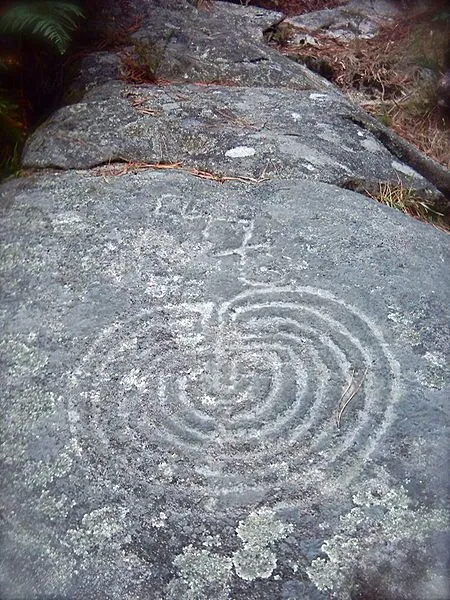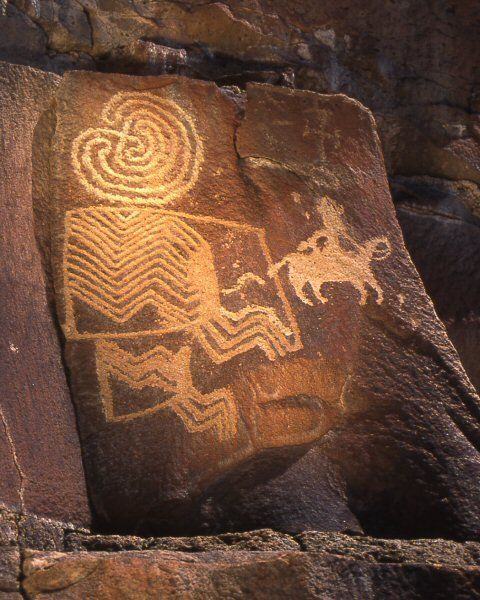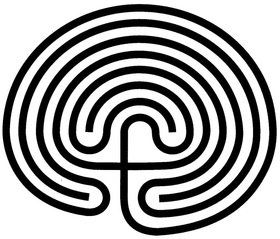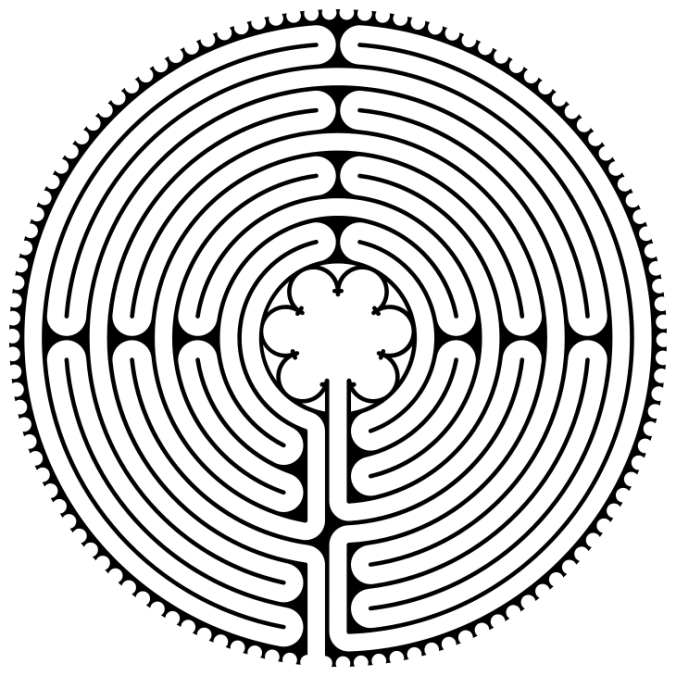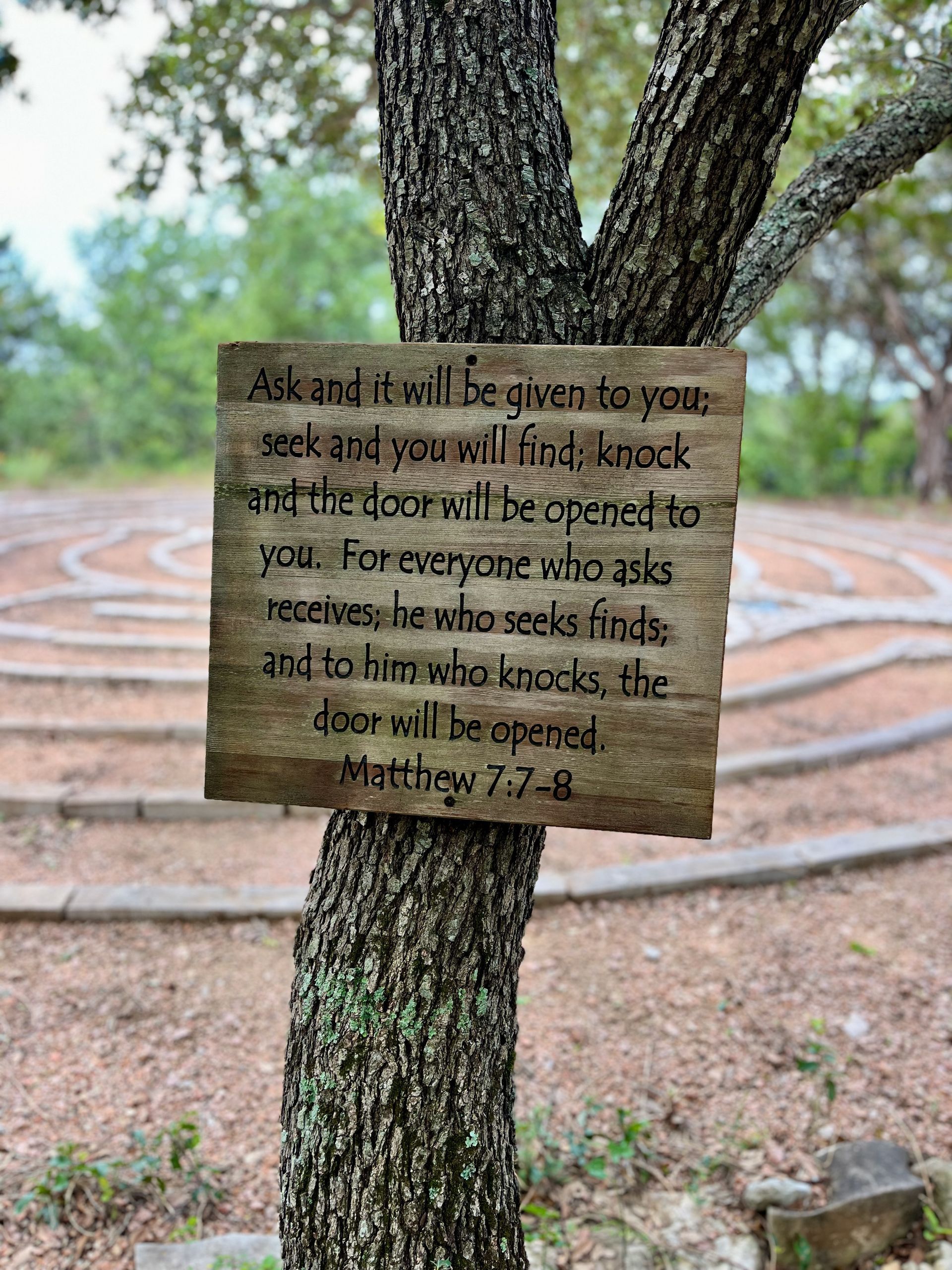

The labyrinth provides the sacred space where the inner and outer worlds can commune, where the thinking mind and the imaginative heart can flow together. -Lauren Artress
What is a Labyrinth?
A labyrinth is both an ancient pattern and a three-dimensional archetype that can be physically experienced as a walking meditation. This ancient symbol represents universal patterns of human nature and appeals to us at an unconscious level. The path leading to the center can become a mirror for where we are in our lives, touching our emotions. Barbara Holmes said, “We are not headed toward a single goal: we are on a pilgrimage toward the center of our hearts.” As we physically move to the center of the pattern, we are symbolically moving to our own centers, our soul and our Divine source.
Engaging with a labyrinth has sometimes been called “body prayer” or walking meditation as we let go of thinking and move with intention. Since there is only one path in, and out, we can disengage from mental activity and simply be present. There is no choosing between different paths. In this way it is different from a maze which has wrong turns and dead ends.
History
The earliest examples were found carved on rocks and painted or scratched on pottery and are estimated to date to the Neolithic and Bronze Age periods. The same design was found on first century BC coins from Crete. During the Roman Empire they were on the mosaic floors of civic buildings and villas, they were also constructed outdoors at this time as a playground for children and as a test of skill for soldiers on horseback.
Labyrinths have been found in many faith traditions and in many countries all over the world. During the medieval period the labyrinth symbol developed into a more intricate form and began to be used by Christians. The symbol first occurred in manuscripts, then later laid in colored marble and tiles on the floors of cathedrals and churches, the most famous at Chartres Cathedral, France. This 13th century labyrinth survives to this day and has become an object of pilgrimage for modern visitors. There are labyrinths in Roman Catholic and Episcopal cathedrals, Protestant churches and retreat centers.
Since the labyrinth symbol first appeared, there have been many design variations, but the ‘Classical’ and ‘Medieval’ types are the most popular.
Why Walk a Labyrinth?
A walking labyrinth is a sacred place set aside to reflect, look within, pray and explore our relationship with God.
Suggestions for Walking a Labyrinth
There is no right or wrong way to walk a labyrinth. A basic approach is to quiet the mind and open the heart. Before you begin, prepare to be open. Release any expectations you may have and let go of the need for control, security or attention and just follow. At the entrance to the labyrinth, perhaps close your eyes, say a prayer, express gratitude, and set the intention for your walk. Do what feels right for you.
Possible Intentions:
- To just listen for God.
- To express gratitude, remembering all that I have is from God.
- To address a physical, emotional, or soul need I have today.
- To leave feelings or needs with God.
- To let go of something to move forward in my life.
- To bring something into my life to take the next step.
- To ask God for clarity or guidance on an important matter in my life.
- If you are Grieving: As you walk, notice where you feel the grief in your body. What does it feel like? Can you give it a shape, a color? How about parts of your body where you don’t feel the grief - can these parts help support the parts that are grieving? Also, consider allowing the labyrinth to help you hold your grief, so you’re not holding it alone.
Three general stages to consider when walking a labyrinth:
Releasing (Purgation): Begin your Walk Inward
Releasing begins when entering the labyrinth and ends at the center. Many use the inward journey to the center to “let go” – quieting the thoughts, worries, concerns, ‘what ifs’, and to-do lists. It is a time to keep your heart and mind open, and gently release thoughts each time they arise. Some focus on the placement of one foot before the other, the breath or a simple silent prayer. Release any expectations and surrender to this walking. Be present to the now.
Receiving (Illumination): At the Center
The center is where you ‘let in’ the answers and blessings that are meant for you. It is different for everyone and different each time you walk the labyrinth. Pause in silence at the center of the labyrinth for as long as you like. You may stand, sit, bow, reach your hands upwards…. whatever feels best for you. Depending on the intention of the walk, some say a prayer, reflect, meditate, listen for answers and revelations, or express gratitude. Take all the time you need to quietly receive what is meant for you.
Returning (Union): Walking Outward
When you are ready, begin walking deliberatively outward. Allow the insights and gifts into your heart and soul. As you move back into your life be empowered by the connection you have received from God. Express gratitude in the way that feels best for you for what you have received.
When you exit the labyrinth, you may want to continue walking, reflecting and praying, or take time to sit and journal about your experience. Not everyone receives insights inside the labyrinth, sometimes the gifts are given upon exit or during reflection. Do what you need to absorb the benefits of your experience.
Sources: www.veriditas.org.
Walking a Sacred Path: Rediscovering the Labyrinth as a Spiritual Practice, Lauren Artress.
The Sacred Path Companion: A Guide to Walking the Labyrinth to Heal and Transform. Lauren Artress






